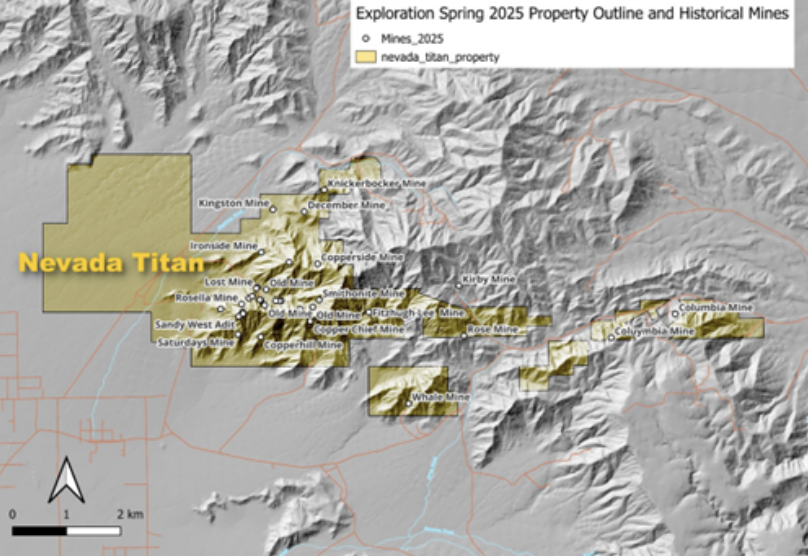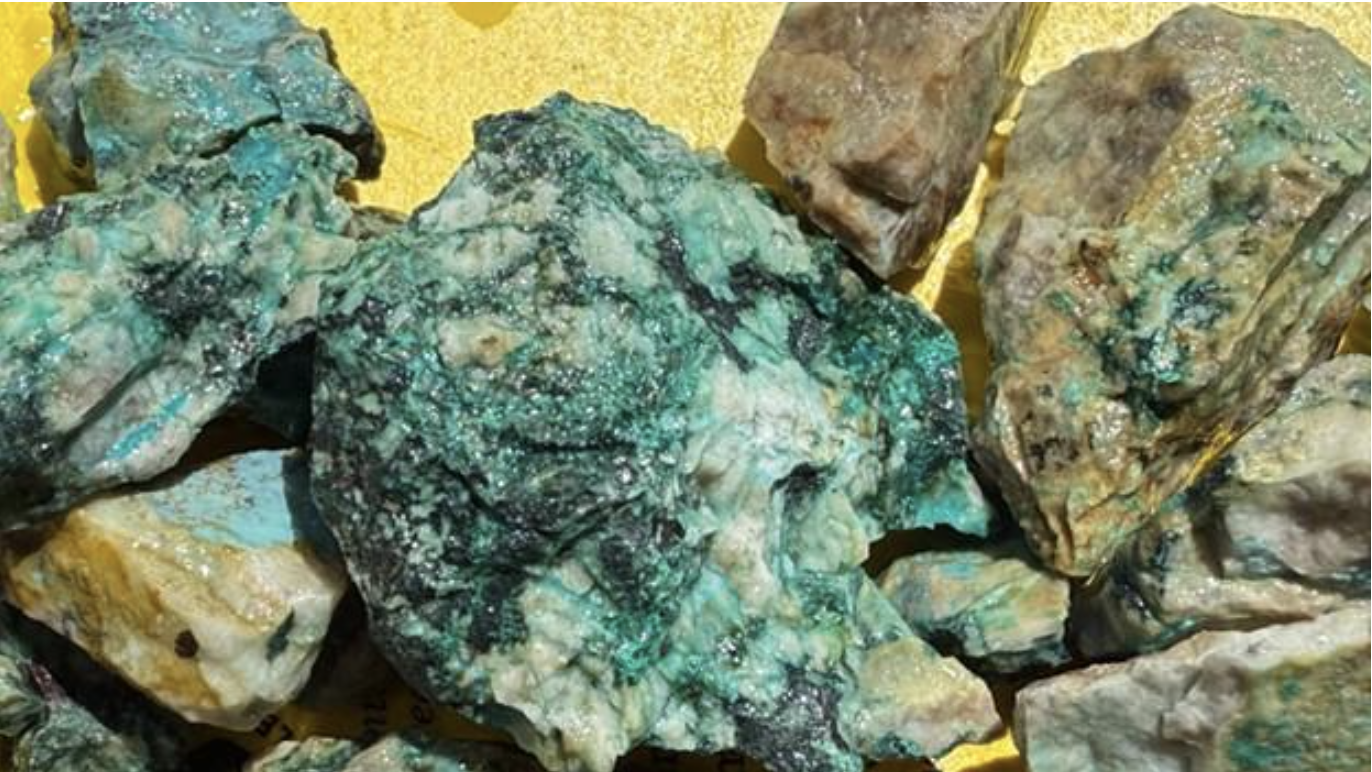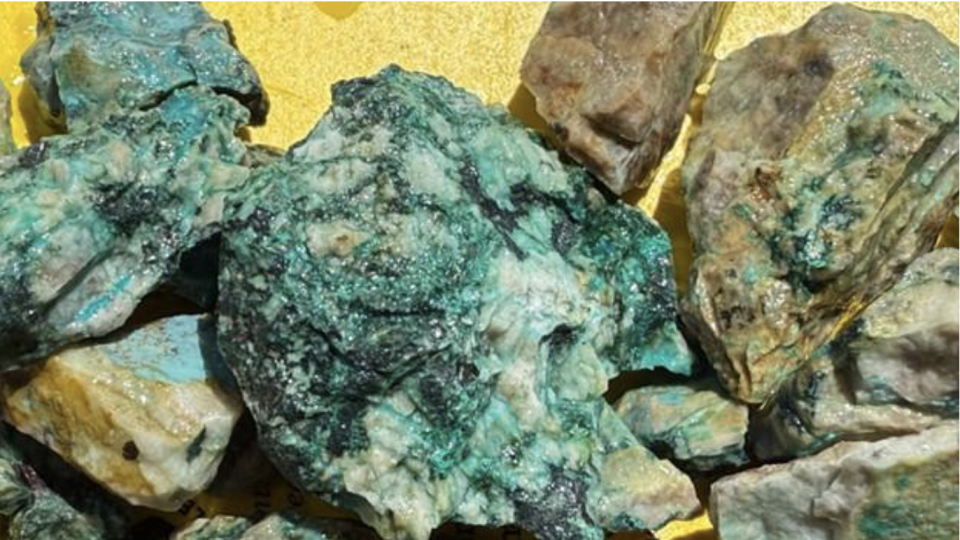*See the Disclaimer on the bottom of this page for important disclosures.
Fairchild Gold Corp. (TSXV: FAIR) has made significant strides at its Nevada Titan Property, revealing new highly mineralized copper zones that could reshape the outlook for this historic mining district near Las Vegas. The company’s latest sampling and mapping efforts have uncovered extensive copper mineralization across multiple target areas, breathing new life into a region that has seen little modern exploration since the 1940s.

Located in Nevada’s Walker Lane mineral belt, the Nevada Titan Property is positioned as a promising copper, gold, and platinum group elements (PGE) exploration project. The property covers 5,470 acres (2,213.7 hectares) and includes 264 unpatented lode mining claims and the 15.8-acre Copper Chief patented claim.1 The area benefits from proximity to Las Vegas, ensuring access to infrastructure and skilled labor needed for year-round operations.
The geology is characterized by Paleozoic limestones and dolostones, cut by a complex network of faults and intrusions. This structural complexity has created multiple pathways for mineralizing fluids, resulting in a patchwork of mineralization styles and target zones.
 In May 2025, Fairchild’s team collected 160 samples from various locations, including the Copperside, Smithsonite, Azurite, Shenandoah, and Fitzhugh Lee Mines, as well as several previously unmapped adits. These samples targeted a range of rock types, such as skarns, breccias, limestones, dolomites, and intrusive rocks.
In May 2025, Fairchild’s team collected 160 samples from various locations, including the Copperside, Smithsonite, Azurite, Shenandoah, and Fitzhugh Lee Mines, as well as several previously unmapped adits. These samples targeted a range of rock types, such as skarns, breccias, limestones, dolomites, and intrusive rocks.
At the Copperside Mine, sampling revealed widespread copper mineralization with visible malachite, chrysocolla, and iron oxides in altered breccias and limestones. The discovery of a mineralized intrusive body dipping west, along with skarn-style alteration extending over 100 meters, suggests that Copperside is the surface expression of a much larger skarn system.
Sampling at the Azurite Mine returned rocks with strong malachite and possible chrysocolla mineralization, along with silicification and carbonate veining. These features point to supergene enrichment, a process where copper is concentrated near the surface by weathering, making this area a high-priority target for further work.

The Fitzhugh Lee Mine, once a copper producer, is now showing signs of being more extensive than previously thought. Mapping revealed an extension zone to the northeast, with mineralization open along strike and at depth. Samples from this area display dense hematitic and goethitic textures, with vivid green malachite indicating strong supergene enrichment along structural conduits.
The Wasp Area, along the property’s western edge, features brecciated limestone with calcite veining and localized copper oxide staining. Early-stage skarn or manto-style mineralization is suspected here, and the area remains largely untested.
At the Smithsonite Mine, recent work identified a 300-meter westward extension of skarn-style alteration and intense brecciation. The zone contains oxidized textures, iron staining, and patchy zinc and copper mineralization, expanding the property’s mineralized footprint.
Fairchild’s technical team has been assembling a robust database that integrates geological, geochemical, and geophysical data from prior surveys, information that is crucial for generating new geochemical maps. These maps will play a decisive role in identifying and ranking exploration targets, thereby supporting the planning of a bold and innovative exploration program in the near future. Additionally, all sample assay results from previous exploration work have been consolidated into a comprehensive relational database for efficient management and analysis. To further streamline data access, maps and cartographic materials are currently being systematically organized into a logical library, ensuring that up-to-date mapping resources are readily available for ongoing geological investigations.
As part of the recent exploration work, Fairchild’s geologists entered into old mine workings and created a video showing some of the existing mineralization.
Luis Martins, CEO of Fairchild Gold, emphasized the company’s commitment to unlocking the Nevada Titan Property’s untapped potential. “At Nevada Titan, Fairchild is conducting high impact exploration on a largely forgotten important historical mining district. Since mining activities ceased in the area in the 1940’s intermittent mainly surface exploration surveys were conducted mostly between 2010 and 2019 generating an important database, comprised of geological, geochemical as well as geophysical information. Fairchild’s team has been diligently reprocessing this data, supplementing it with freshly collected data resulting from the thorough geological mapping and sampling since last September, with the objective of confirming the property’s significant untapped potential for copper and gold, but also in different areas for other critical metals such as antimony, cobalt and PGE’s. The company will continue to evaluate, refine and prioritize the numerous potential areas it has generated to date paving the way for a maiden drilling campaign later this year.”
As Fairchild Gold continues its exploration, the company is positioning itself as a player to watch in Nevada’s resurgent copper and gold sector. Investors and industry observers will be keeping a close eye on the results of the upcoming drilling campaign, which could further define the scale and quality of mineralization at Nevada Titan.
Compensation Disclosure – VYRE Business News Global TV (VBNGtv) provides readers with general, non-personalized information regarding private and publicly traded companies that have retained VBNGtv to provide advertising, branding, marketing, and news syndication on their behalf. VBNGtv receives compensation from some of the companies it profiles in the form of cash, check, credit card and or wire payments. Monthly fees ranging from $3,330 to $7,500 per month have been paid to VBNGtv by Fairchild Gold Corp. for these services. This fee creates a potential conflict of interest which readers should consider. In addition, to the extent that parties, including the companies discussed, investors or others, further disseminate content or other statements provided by VBNGtv, such parties operate outside of VBNGtv’s control and such further dissemination is without the permission and authority of VBNGtv. Such further dissemination may not be accompanied by appropriate disclaimers or other disclosures, and VBNGtv assumes no responsibility for and expressly disclaims responsibility for any such statements, omissions or dissemination.
Because VBNGtv receives compensation for disseminating information, we may have a conflict of interest in terms of disseminating negative information about the companies that retain us. While we strive to present non-personalized commentary and analysis in a disinterested manner, readers should consider our arrangements in reaching their independent decision as to how to use the information contained on the VBNGtv website. It should be noted that we DO NOT (i) have authority over the funds of any of our readers, (ii) exercise decision-making authority to handle any of our readers’ portfolios or (iii) engage in individualized, investment-related interactions with subscribers.
In addition, our independent contactors, writers and editors who provide content or review content contained on VBNGtv’s website are hereby explicitly notified that they should not be buying, selling or maintain positions in securities of the companies discussed on VBNGtv’s website. Such trading, which necessarily reflects an individual’s personal resources and financial condition, may be inconsistent with statements on VBNGtv’s website. VBNGtv assumes no responsibility for and expressly disclaims responsibility for any statements or omissions about compensation to all independent contactors, writers and editors who provide or review content.
VBNGtv DOES NOT MAKE ANY WARRANTIES, EXPRESSED OR IMPLIED, AS TO RESULTS TO BE OBTAINED FROM USING THIS INFORMATION AND MAKES NO EXPRESS OR IMPLIED WARRANTIES OR FITNESS FOR A PARTICULAR USE. ANYONE USING THIS REPORT ASSUMES FULL RESPONSIBILITY FOR WHATEVER RESULTS THEY OBTAIN FROM WHATEVER USE THE INFORMATION WAS PUT TO. ALWAYS TALK TO YOUR FINANCIAL ADVISOR BEFORE YOU INVEST. WHETHER A STOCK SHOULD BE INCLUDED IN A PORTFOLIO DEPENDS ON ONE’S RISK TOLERANCE, OBJECTIVES, SITUATION, RETURN ON OTHER ASSETS, ETC. ONLY YOUR INVESTMENT ADVISOR WHO KNOWS YOUR UNIQUE CIRCUMSTANCES CAN MAKE A PROPER RECOMMENDATION AS TO THE MERIT OF ANY PARTICULAR SECURITY FOR INCLUSION IN YOUR PORTFOLIO. The information provided is solely for informative purposes and is not a solicitation or an offer to buy or sell any security. It is not intended as being a complete description of the company, industry, securities or developments referred to in the material. Any forecasts contained in this report were independently prepared unless otherwise stated and HAVE NOT BEEN endorsed by the Management of the company which is the subject of any report. ALL INFORMATION PRESENTED IS COPYRIGHT. YOU MAY NOT REDISTRIBUTE ANY OF THIS INFORMATION WITHOUT OUR PERMISSION. Please give proper credit, including citing VYRE Business News Global and/or the analyst, when quoting information presented by VBNGtv.
The information contained on the VBNGtv website is intended to be viewed only in jurisdictions where it may be legally viewed and is not intended for use by any person or entity in any jurisdiction where such use would be contrary to local regulations or which would require any registration requirement within such jurisdiction.

